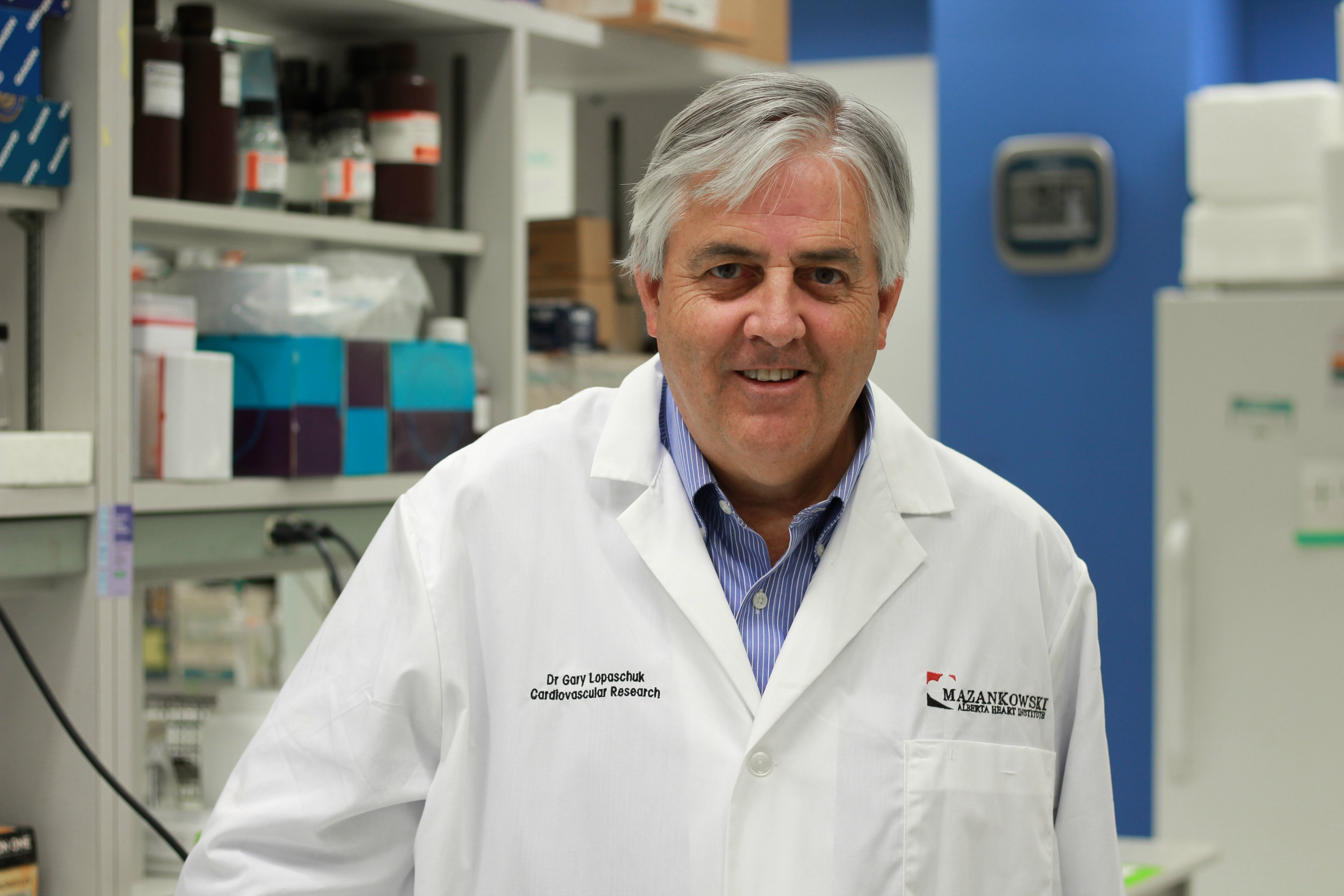Cardiac scientist Gary Lopaschuk has spent 35 years at the University of Alberta focused on research to lessen the severity of heart disease. While he has had opportunities to go elsewhere, he turned them down.
“I stayed here and have no regrets. It’s a great environment and a great university,” he says.
His work in the field of energy metabolism—combined with his dedication to teaching the next generation and a passion for raising awareness about heart disease—has earned Lopaschuk the University Cup, our university’s highest honour for faculty members.
Lopaschuk, a professor in the Faculty of Medicine & Dentistry, caught the research bug as an undergraduate student. He began his research career with an interest in the effects of diabetes on heart disease. After decades of scholarly exploration, he progressively narrowed his examination to understand the molecular mechanisms of energy metabolism that underpin heart function.
“The heart has by far the highest energy requirement of any organ in the body on a per-weight basis, because it’s pumping all the time,” he says, and it normally gets most of that from carbohydrates. In those with diabetes, the fuel source switches to mostly fat to get an adequate supply. That is a problem because fat requires more oxygen to metabolize, so it’s a less-efficient way to get energy and can result in heart cell damage or cell death.
This realization put Lopaschuk at the beginning of the soon-burgeoning field of energy metabolism research, and his pioneering contributions have continued.
Understanding the processes of how the heart uses fat as energy—and how to target and inhibit the mechanisms of an abnormal process—is leading to a therapeutic approach to treat heart failure and heart attacks. Lopaschuk has partnered with pharmaceutical companies to develop inhibitors of a specific enzyme that is critical in how the heart uses fuels. His current work adds to a pivotal discovery that ketones can provide an alternate fuel, beneficial to the heart, and this exploration continues.
Lopaschuk’s knowledge, experience and success in research creates a rich environment for learners, who can’t help but be drawn in by his enthusiasm.
“His teaching style resulted in getting me very excited about this research area. Indeed, to this day my research program continues to focus on the control of energy metabolism in the heart,” says Jason Dyck, a professor in the Department of Pediatrics. “Dr. Lopaschuk was instrumental in shaping my future research and academic career … [he has] continued to be a key supporter.”
About 12 undergraduate and graduate students, post-doctoral fellows and staff are usually active in the lab, and that number bumps up to 16 when summer students arrive. They all receive hands-on training in research methodology and techniques applied to real-world research with mentoring from one of the masters.
“Teaching is probably one of the most rewarding parts of my career, the number of students we’ve taught and trained. My goal is to make them experts in cardiac energy metabolism,” he says. His approach to teaching is to challenge the students and guide them to be critical thinkers who examine research literature for flaws, strengths and the science that goes into the papers for a fuller understanding of the subject matter.
All this effort doesn’t stay inside the lab. Lopaschuk is also passionate about his role in community service. He works closely with the Heart & Stroke Foundation, doing his part to raise awareness about heart disease and energy metabolism research. He also partners with community service organizations like the Rotary Club to speak to members about the signs of heart disease and what they may do to prevent it. Lopaschuk also regularly gives presentations to classes of high school students, lighting a spark of curiosity and encouraging them to attend the U of A to pursue careers in science.
All of this—the path to get to the U of A, the research discoveries, the teaching and the outreach—are embodied in the University Cup, a silver bowl now prominently displayed in Lopaschuk’s home office.
“I was very happy to hear about the news,” he says. “I feel extremely honoured.”
